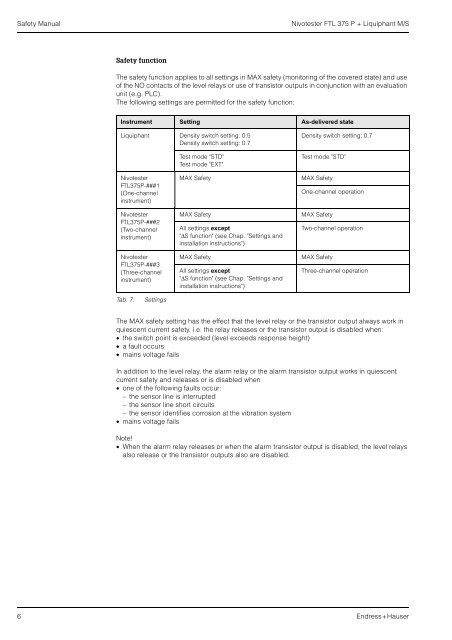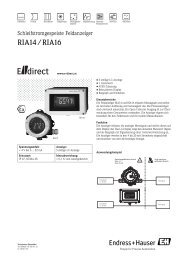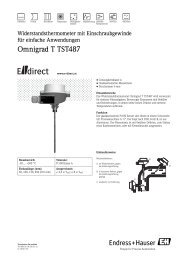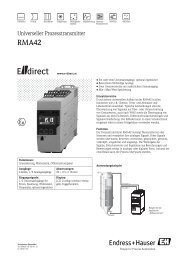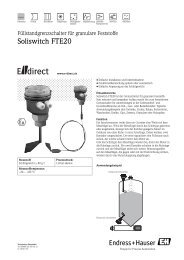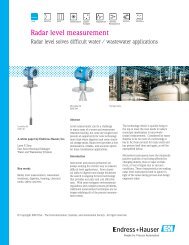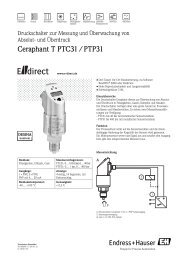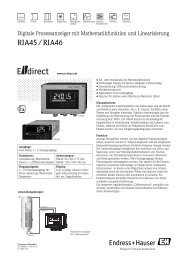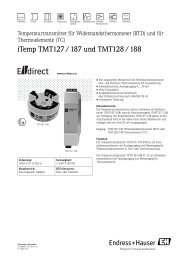Limit Level Measuring System liquiphant M/S + nivotester FTL 375 P
Limit Level Measuring System liquiphant M/S + nivotester FTL 375 P
Limit Level Measuring System liquiphant M/S + nivotester FTL 375 P
Create successful ePaper yourself
Turn your PDF publications into a flip-book with our unique Google optimized e-Paper software.
Safety Manual Nivotester <strong>FTL</strong> <strong>375</strong> P + Liquiphant M/S<br />
Safety function<br />
The safety function applies to all settings in MAX safety (monitoring of the covered state) and use<br />
of the NO contacts of the level relays or use of transistor outputs in conjunction with an evaluation<br />
unit (e.g. PLC).<br />
The following settings are permitted for the safety function:<br />
Instrument Setting As-delivered state<br />
Liquiphant Density switch setting: 0.5<br />
Density switch setting: 0.7<br />
Nivotester<br />
<strong>FTL</strong><strong>375</strong>P-###1<br />
(One-channel<br />
instrument)<br />
Nivotester<br />
<strong>FTL</strong><strong>375</strong>P-###2<br />
(Two-channel<br />
instrument)<br />
Nivotester<br />
<strong>FTL</strong><strong>375</strong>P-###3<br />
(Three-channel<br />
instrument)<br />
Tab. 7: Settings<br />
Test mode "STD"<br />
Test mode "EXT"<br />
Density switch setting: 0.7<br />
Test mode "STD"<br />
MAX Safety MAX Safety<br />
One-channel operation<br />
MAX Safety MAX Safety<br />
All settings except<br />
"∆S function" (see Chap. "Settings and<br />
installation instructions")<br />
Two-channel operation<br />
MAX Safety MAX Safety<br />
All settings except<br />
"∆S function" (see Chap. "Settings and<br />
installation instructions")<br />
Three-channel operation<br />
The MAX safety setting has the effect that the level relay or the transistor output always work in<br />
quiescent current safety, i.e. the relay releases or the transistor output is disabled when:<br />
• the switch point is exceeded (level exceeds response height)<br />
• a fault occurs<br />
• mains voltage fails<br />
In addition to the level relay, the alarm relay or the alarm transistor output works in quiescent<br />
current safety and releases or is disabled when<br />
• one of the following faults occur:<br />
– the sensor line is interrupted<br />
– the sensor line short circuits<br />
– the sensor identifies corrosion at the vibration system<br />
• mains voltage fails<br />
Note!<br />
• When the alarm relay releases or when the alarm transistor output is disabled, the level relays<br />
also release or the transistor outputs also are disabled.<br />
6 Endress+Hauser


